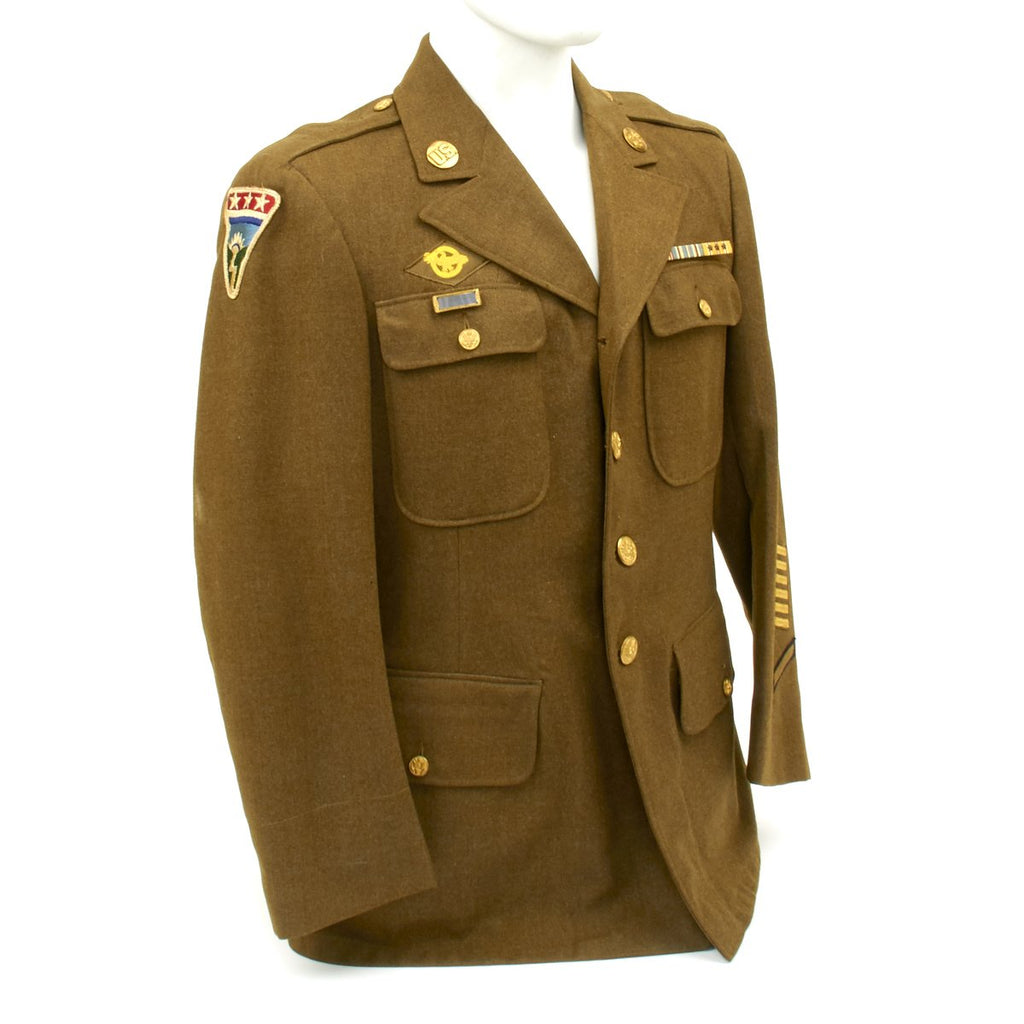Item Description
Original Item: Only One Available. The Ledo Road was well on its way through Burma and would need a symbol. In April of 1944 a competition to design a Ledo Road insignia was announced by General Pick and published in the April 13, 1944 issue of CBI Roundup, theater newspaper. T/4 Robert Smith, a cartographic illustrator assigned to the 20th General Hospital, had samples made for his design entry.
The October 5, 1944 edition of CBI Roundup contained an announcement of the contest results. According to that account, there were actually three winners and T/4 Robert Smith was not listed as one of them. Roundup listed T/Sgt. R. G. Powell of Atlanta, Ga., Engineers; T/4 Stewart D. Randolph of Chicago, Ill., Engineers, and T/4 Ralph B. Fuller of Minneapolis, Minn., Ordnance, as co-winners of the award.
The photo from Roundup showed two Red Cross women holding a large sample of the winning design, which was said to be a compilation of the three winners' entries. This account may have been from Public Relations sources and may not be completely accurate as to who actually designed the patch. The May 24, 1945 issue carried a story indicating official approval of the patch was hung-up in War Department red tape in Washington.
Although approved locally for uniform wear, the insignia was never officially approved by the U.S. Army. Having been created over two years after construction of the road began, most who were qualified to wear it, never did, at least not until they were sent home. Smith himself never saw the final version until after he had been home for several months.
This extremely rare LEDO ROAD Shoulder Sleeve Insignia is found on the class A uniform jacket other features include:
China-Burma-India shoulder sleeve insignia found on left shoulder.
Quartermaster collar tab.
Ruptured Duck patch.
Presidential Unit Citation.
Medal ribbon bar that includes: Army Good Conduct, American Defense Medal, Asiatic Pacific Campaign Medal with three battle campaign stars.
The tunic is a size 38 and is offered in very good condition. It is un-named.
The Ledo Road (from Ledo, Assam, India to Kunming, Yunnan, China) was built during World War II so that the Western Allies could supply the Chinese as an alternative to the Burma Road (which had been cut by the Japanese in 1942). It was renamed the Stilwell Road, after General Joseph Stilwell of the U.S. Army, in early 1945 at the suggestion of Chiang Kai-shek. It passes through the Burmese towns of Shingbwiyang, Myitkyina and Bhamo in Kachin state.
In the 19th century, British railway builders had surveyed the Pangsau Pass, which is 1,136 metres (3,727 feet) high on the India-Burma border, on the Patkai crest, above Nampong, Arunachal Pradesh (then part of Assam). They concluded that a track could be pushed through to Burma and down the Hukawng Valley. Although the proposal was dropped, the British prospected the Patkai Range for a road from Assam into northern Burma. British engineers had surveyed the route for a road for the first 130 kilometres (80 miles). After the British had been pushed back out of most of Burma by the Japanese, building this road became a priority for the United States. After Rangoon was captured by the Japanese and before the Ledo Road was finished, the majority of supplies to the Chinese were delivered via airlift over the eastern end of the Himalayan Mountains known as the Hump.
Of the 1,726 kilometres (1,072 mi) long road, 1,033 kilometres (642 mi) is in Burma and 632 kilometres (393 mi) is in China with the remainder in India.
After the war, the road fell into disuse. In 2010, the BBC reported, "Much of the road has been swallowed up by jungle.



















